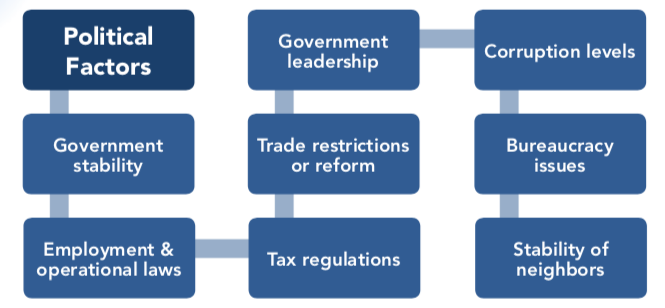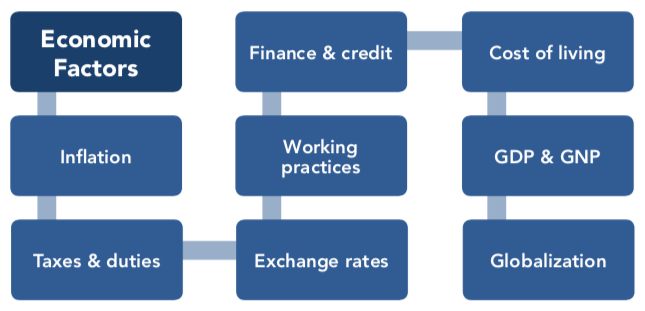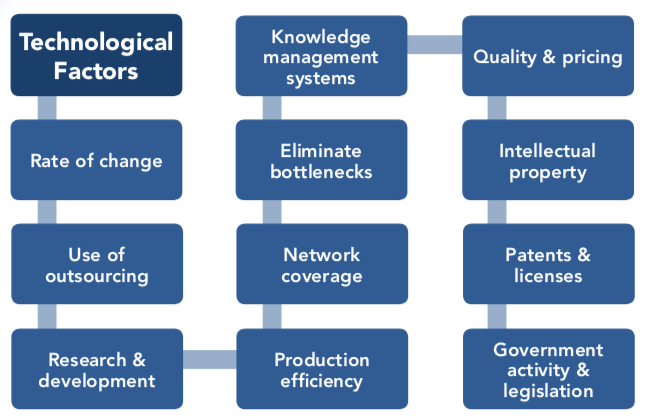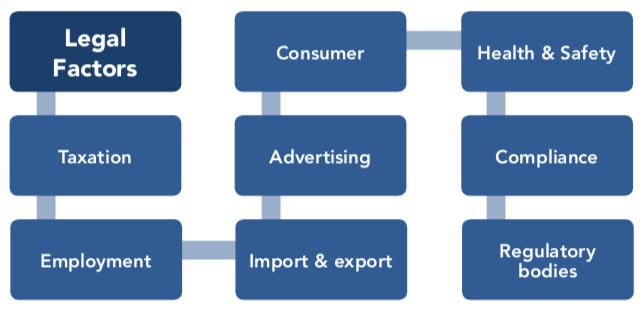
Nowadays the business environment is changing faster than ever before. The organisations must analyse the implications of these changes and modifying the way they react to them, and adapt the business strategy.
PESTLE Analysis is a well known tool for identifying these external factors, which can be used to help you consider Political, Economic, Social, Technological, Legal, and Environmental issues.
The analysis of the external environment should be an ongoing process for management, since the factors identified may provide insights into problems for the future or opportunities for new successes.
Using the PESTLE Analysis and Five Forces technique together helps to provide a detailed picture of the situation facing an organisation. Just using one technique may leave gaps in the knowledge and understanding.
Political Factors

Examples of political factors could be a potential change of government, with the corresponding changes to policies and priorities, or the introduction of a new government initiative. These may be limited to the home country within the organisation operates, but this tends to be rare these days since many changes have an effect in several countries. The development of bodies such as the European Union and the growth of global trade and multinational organisations have changed the scope of political activity. This has increased the possibility of political issues arising that may impact upon the organisation and how it operates.
Economic Factors

Economic factors may also be limited to the home country, but as global trade continues to grow, economic difficulties in one nation tend to have a board, often worldwide, impact. Examples of economic factors could be the level of growth within which the organisation operates. The 2008 sub-prime mortgage crisis in the USA, with its subsequent worldwide impact, is a good example of an economic situation that affected many organisations.
Social Factors

Socio-cultural factors are those arising from the customers or potential customers. These changes can often be subtle, and they can be difficult to predict or identify until there is a major impact. Examples could be demographic issues such an increase in the number of working mothers, or consumer behaviour patterns such as the rise of disposable fashion.
Technological Factors

This area covers factors arising from the devlopment of technology. There are two types of technological change: there can be developments in technology specific to an industry or market, for example enhancements to manufacturing technology.
IT developments can instigate extensive business impacts, often across industries or business domains and on a range of organisations. It is often the case that there is a failure to recognise the potential use of the technology – at least until a competitor emerges with a new or enhanced offering. For example, increased functionality of mobile technology or extended bandwidth for internet transactions can present opportunities to many organisations. However, the identification of such technological advances is critical if the organisation is to recognise the potential they offer.
Legal Factors

It is vital to consider factors arising from changes to the law, since the last decade has seen a significant rise in the breadth and depth of the legal regulations within which organisations have to operate. Legal compliance has become such an important issue during this period that many business analysis assignements have been carried out for the purpose of ensuring compliance with particular laws or regulations. Some legal issues may originate from the national government but others, for example EU laws or global accounting regulations, may operate across a broader spectrum. One key issue when considering the legal element of the PESTLE analysis is to recognise laws that have an impact upon the organisation even though they originate form countries other than that in which the organisation is based. This situation may occur where an organisation is operating within the originating country or working with other organisations based in that country.
Environmental Factors

Examples of factors arising from concerns about the natural environment, in other words the ‘green’ issues, include increasing concerns about packaging and the increase of pollution.
The PESTLE analysis technique is usually used in a meeting or workshop where several ideas and opinions can be sought. Representatives from a range of functions should be present so that they can provide specialist information.
The PESTLE technique is straightforward to use. Typically, each element will be considered in turn and any potential issues for that area documented. Once all of the elements have been considered, the factors listed are evaluated in order to identify those most likely to affect the organisation. This result in a list of key external influences that could cause it to take action – either to gain from an opportunity that appears to be present or to ensure that any threats are removed.
Although the technique is usually seen as one where the external environment is considered, PESTLE may also be used to analyse influences operating within an organisation. This situation arises where issues or ideas concerning a particular function or department are under examination. An analysis of the external factors that may impact upon that department can help in a number of ways, from clarifying reasons for change to identifying options.